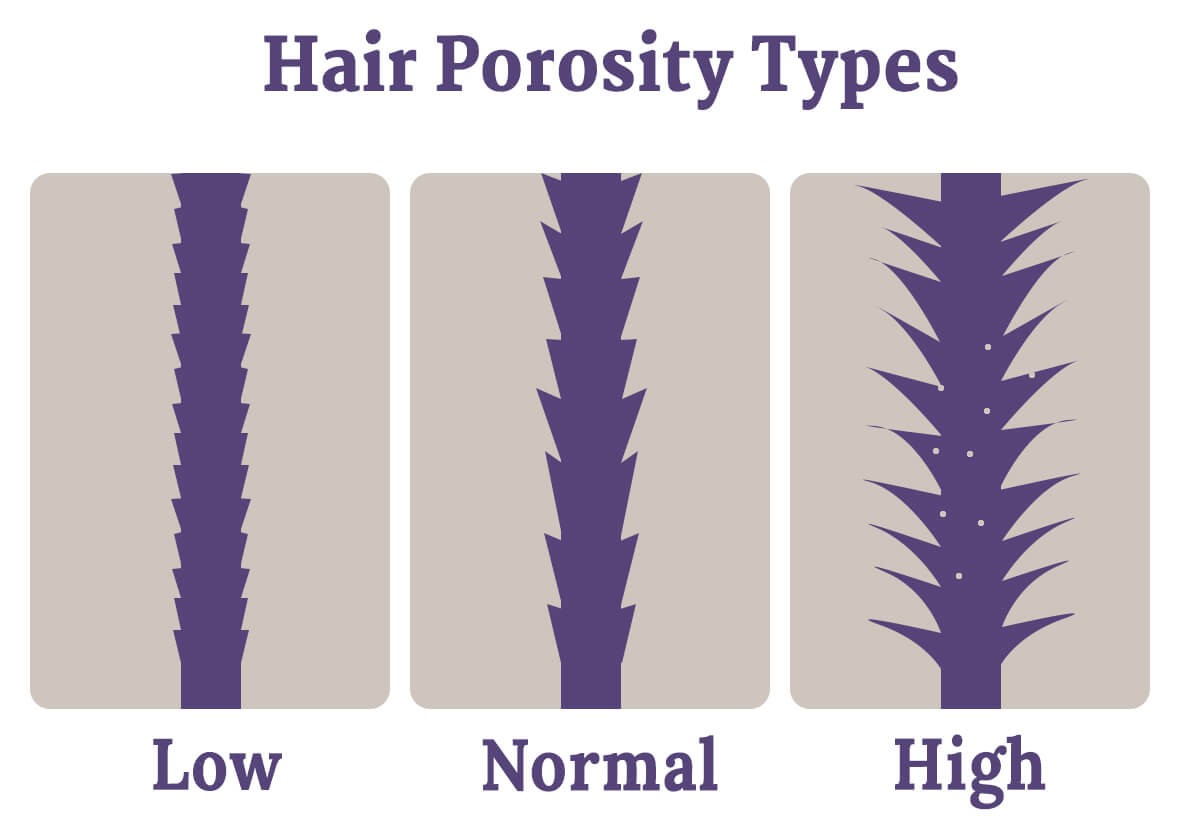HOW TO CHOOSE A SUITABLE OIL? HAIR POROSITY
Although it is easy, many of us find it hard to pick a proper hair oil. If you want proper hair and scalp care, you must read this text.
You will learn what hair porosity is, how to identify it and which oils are suitable for your hair type.
 Every hair type has its porosity. This term defines how raised the cuticles are along the hair shaft. There is low, medium/normal and high porosity. Types of porosity often “mix”. For instance, we can have low porosity roots yet high porosity ends. Lots of hair maniacs define their hairdo as medium porosity – between low and high porosity.
Every hair type has its porosity. This term defines how raised the cuticles are along the hair shaft. There is low, medium/normal and high porosity. Types of porosity often “mix”. For instance, we can have low porosity roots yet high porosity ends. Lots of hair maniacs define their hairdo as medium porosity – between low and high porosity.
LOW POROSITY HAIR
It is smooth, straight and shiny, resistant to dyes and styling, slowly-drying. It repels moisture. Low porosity hair is prone to damage, therefore proper care is crucial. Regrettably, it does not always bring positive effects. Why? Cuticle scales are tightly bound together; they are closed and evenly arranged. Cosmetic butters and solid oils are excellent for low porosity hair. These include: coconut oil, flaxseed oil, sunflower oil, babassu oil, shea butter, mango butter.
MEDIUM/NORMAL POROSITY HAIR
In simple words, it is two in one – low and high porosity hair. It can be straight or wavy; it is easy to style and gets affected by weather conditions – absorbs moisture and gets frizzy. Contrary to other hair types, it is resistant to various damages. Use monounsaturated oils in your hair treatment. Try out: argan oil, plum seed oil, olive oil, sweet almond oil, passionfruit oil, avocado oil.
HIGH POROSITY HAIR
This hair type is damaged, dry and dull. If it often undergoes styling treatments (dyeing, straightening, permanent wave), it gets even weaker. Wavy and curly, frizzy and static hair is usually called high porosity hair. Its cuticle scales are highly raised. As a result, nutrients as well as damaging substances get inside the hair more quickly. If this is your hair type, use polyunsaturated oils: flaxseed, evening primrose, cotton seed, wild rose, grapeseed and wheat.
KEEP IN MIND: There is no oil that brings effects after the first application. Yes, your hair will look better but you will have to wait for final results. Be patient! Change the oil if you don’t see any effects after a few weeks of treatment. You might have picked wrong oil for your hair porosity or maybe you have wrongly determined your hair porosity. Luckily, there are simple tricks that will help you.
How to identify hair porosity? Do the test
Tests have become trendy among hair maniacs and girls who desire to take care of their hairdo. Mini quizzes may help you determine hair porosity type. As a consequence, you will be able to choose suitable haircare products. Mists, masks and conditioners are not the only products that you can use in hair treatment. Remember to test hair oils. They may turn out to be far more effective than well-known shampoos and serums. Tests that define hair porosity include: water test, touch test, observation test, flour test, coconut oil test.
1. Water test.
Put a few strands of hair into a large dish filled with water. They must be clean and dry; they cannot be covered in cosmetics (silicones, masks, conditioners). Watch carefully what happens to them. The strands sank to the bottom after 2-3 minutes? It means they are high porosity. They have soaked in water quickly which easily penetrated through open cuticles. What if your hair is still floating on the surface of water? You probably have low porosity hair. Closed cuticles keep water from getting inside the strands.
2. Touch test.
Take a strand and feel it. It is coarse and uneven? Your hair is high porosity. Smooth, soft and slick hair is low porosity. Sadly, this method is unreliable. Not everyone will find it helpful. Some girls have dystrophic or dysplastic hair. The appearance and condition of such strands differ from normal healthy hair. They are weak and have twisted structure.
3. Observation test.
It is probably the easiest method. You simply watch your hair: the way it looks like after washing, blow-drying, on a rainy day, during hot summer and in any conditions that it can be exposed to damage. If you notice shiny and smooth hair, it is low porosity. Dry and dull hair is high porosity.
4. Flour test.
You don’t need to be a chef to do this test. You sprinkle some flour over your hair to check its porosity. If your strands are white and covered in flour, you surely have high porosity hair. The other way round: low porosity hair won’t be covered in flour. Remember to wash your hair thoroughly and remove cosmetics and sebum before the test.
5. Coconut oil test.
Apply coconut oil to hair. After more or less an hour, wash hair with a mild shampoo. Don’t blow-dry; let it air-dry. If it is smooth and glossy, it is low porosity. Frizzy and shine-less strands are high porosity.
Something for the lazy ones. Visiting a trichologist
If you don’t feel like doing any of the tests, make an appointment with a trichologist. It is a doctor who provides a professional hair analysis and care. The trichologist examines your hair under the microscope, determines its length, density, condition of cuticles and ends. If the doctor says that your scalp is in poor condition, ask for prescribing appropriate preparations and recommending some hair products. Have you ever observed your hair under the microscope? If not, it is a great chance. Will you seize it?